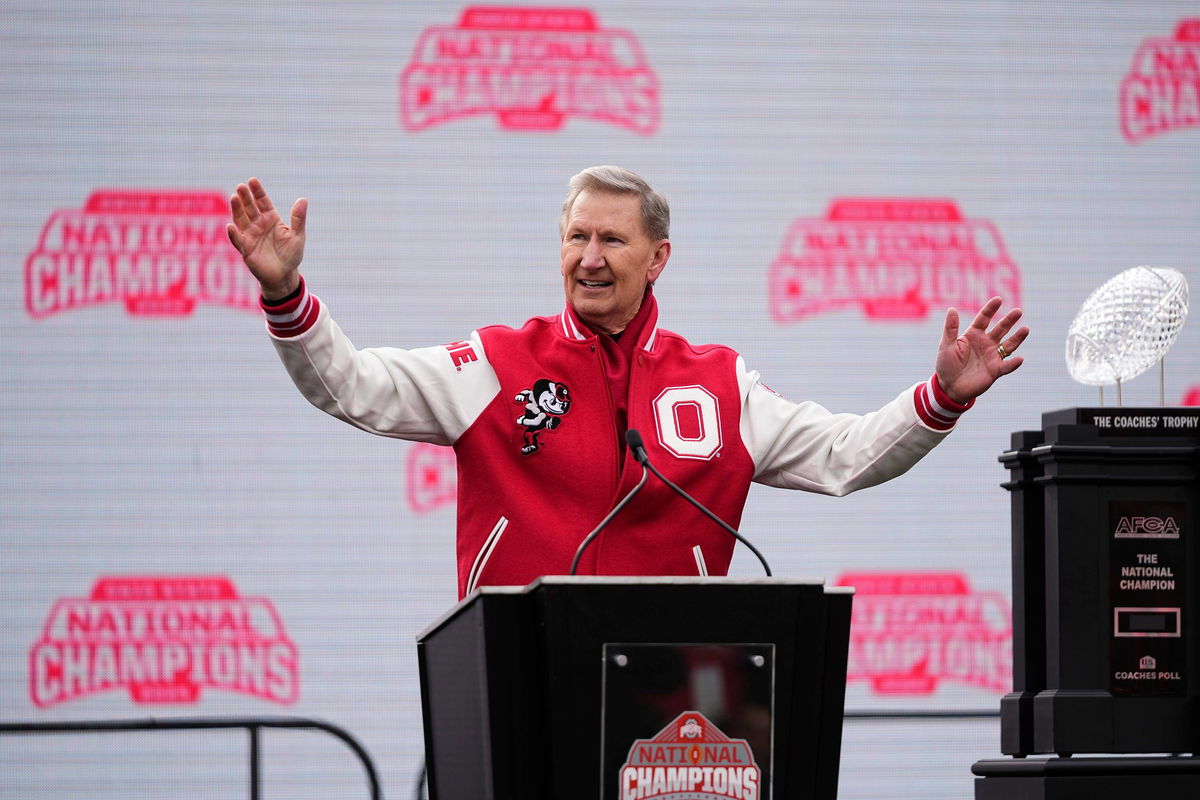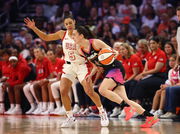
Imago
Syndication: The Columbus Dispatch Ohio State president Ted Carter speaks during the Ohio State Buckeyes College Football Playoff National Championship celebration at Ohio Stadium in Columbus on Jan. 26, 2025. Columbus , EDITORIAL USE ONLY PUBLICATIONxINxGERxSUIxAUTxONLY Copyright: xAdamxCairns/ColumbusxDispatchx USATSI_25273955

Imago
Syndication: The Columbus Dispatch Ohio State president Ted Carter speaks during the Ohio State Buckeyes College Football Playoff National Championship celebration at Ohio Stadium in Columbus on Jan. 26, 2025. Columbus , EDITORIAL USE ONLY PUBLICATIONxINxGERxSUIxAUTxONLY Copyright: xAdamxCairns/ColumbusxDispatchx USATSI_25273955
Clemson and Florida got the ACC rolling out a viewership-based cash pie. Rather than the equal revenue received by its members, the two teams split 40% of the media-rights revenue. The remaining 60%? Cashed in based on the viewership metric. The situation is not similar in other conferences. For instance, the B1G shares its revenue equally with the member schools. However, one program, in particular, has been gunning for a change.
Watch What’s Trending Now!
The B1G signed a seven-year, $8 billion media rights deal with NBC, CBS, and FOX until the 2029-30 season. The conference shares the revenue equally. One positive is that it ensures financial stability for all the members. However, not every member brings the same eyeballs to the games. Historically, programs like Ohio State and Michigan have led the charts when it comes to viewership. Ted Carter, the OSU president, is hinting at the possibility of a change in the existing model.
Carter is very pleased with how his program is topping the charts. But unlike the ACC, that isn’t reflected in how money is getting distributed. Of course, there is no imminent change possible. But in the future? “I think that’s going to be a conversation that will be had over time,” he told USA Today.
ADVERTISEMENT
Asked about the possibility of the Big Ten moving to an unequal revenue sharing model, Ted Carter said he thinks “that’s going to be a conversation that will be had over time.” https://t.co/b0yh66oAWt
— Eleven Warriors (@11W) September 11, 2025
What makes the Buckeyes strongly vouch for this arrangement is the Ohio State brand. “I will say that there are only a couple of schools that really represent the biggest brands in the Big Ten, and you can see that by the TV viewership,” Carter said. You don’t have to go too far to see how the brand value of Ohio State turns into visibility for the B1G.
“I mean, look what we just went through with the Texas game (week 1)…. You know, 16.6 million people [were] watching that game over the whole game, and it peaked at 18.6 million. It’s the most-watched opening game in history and the third-largest game ever watched in a regular season (on FOX). So, that’s what happens when you put the Ohio State brand out there.”
ADVERTISEMENT
Although he is brimming with optimism about that proposal, the switch and the conversation will not be addressed until 2030. “So, again, you’ve got to be able to think a little bit differently. I mean, we’re the top-selling brand for apparel. We’re a proud member of using Nike,” he added. They are further exploring ways to offset the costs. The eventual goal? “To remain self-sufficient.”
The ACC’s model shift came about due to the hiccups surrounding FSU and Clemson’s piled-up lawsuits, threatening to leave for greener pastures. Whereas Carter stresses that OSU is a proud member of the Big Ten. “Committed to maintaining” its membership, the OSU is keen to roll off the unequal revenue sharing in good spirits. Given that the media rights and the viewership model aren’t the major pillars to mint money from. But that might not bear well for one Big Ten program
ADVERTISEMENT
Indiana Hoosiers on high alert
The Indiana Hoosiers are rising fast both in rankings and winning streaks. But the revenue? It’s a slump. In 2024, the program’s athletic department reported a $3.1 million deficit. And that too after receiving an additional $173.5 million in total operating revenues, a whopping $28.8 million increase from last fiscal year. Media rights alone brought in $50.8 million.
But the expenses piled up, doubling down on the strain. The department’s operating expenses skyrocketed to $176.6 million for the 2024 fiscal year. Two of the biggest drains? $32.5 million in coaching salaries and $22.1 million in severance payments. The Hoosiers got the additional revenue, but the expenses took their toll as well.
ADVERTISEMENT
But what’s significant from the POV of an unequal revenue-sharing model, minting cash on viewership metrics (majorly), is the concern. Fewer eyeballs. Last season, data compiled from Programming Insider and Sports Business Journal put forth that the Indiana-Northwestern game on the Big Ten Network drew far fewer viewers than any other Power Four conference game. 439,000 views, to be exact.
Top Stories
Tom Brady Makes Career Announcement for Vegas as Pete Carroll Addresses Losing Raiders Locker Room

Dolphins’ Jordyn Brooks Publicly Calls Out Locker Room Over ‘Poor’ Performance Against Steelers

Cam Newton Makes NFL Return Conditions Clear to 32 Teams as Panthers Legend Confirms Retirement Stance

Caitlin Clark Shows Concerning Signs vs. Kelsey Plum During USA Camp Debut, per National Reporter

Andy Reid Makes Final Decision on Signing New Chiefs QB After Patrick Mahomes’ ACL Injury

When an American Legend Confessed to His Long Kept Promise to Dale Earnhardt That He Still Honors

Curt Cignetti grabbed the headlines, but the matchups failed to grab significant eyeballs. The views begin to drop following the Week 5 clash against Maryland, drawing in 547,000 views on the Big Ten Network. The highest views it grabbed were during its clash with UCLA, with 1.29 million views on NBC. But that very matchup was NBC’s least-viewed game among its prime-time games last season. Although the viewership numbers require proper context, the Hoosiers struggled to get more viewership.
If the Big Ten implements an unequal revenue-sharing model based on TV ratings, and Indiana does not increase its national visibility, the university may face financial repercussions.
ADVERTISEMENT
ADVERTISEMENT
ADVERTISEMENT
ADVERTISEMENT

